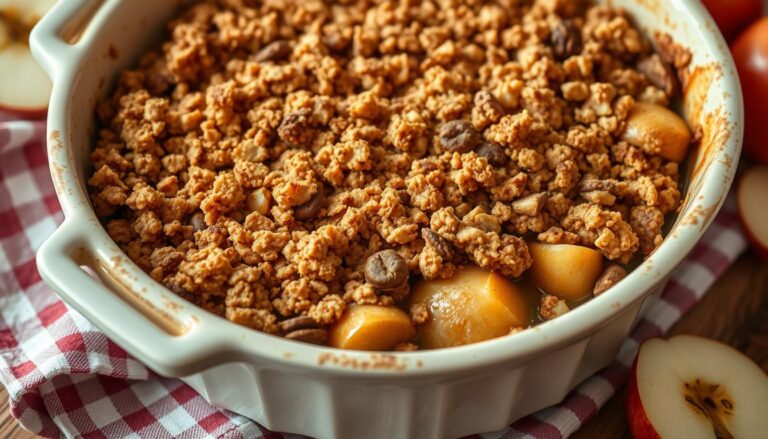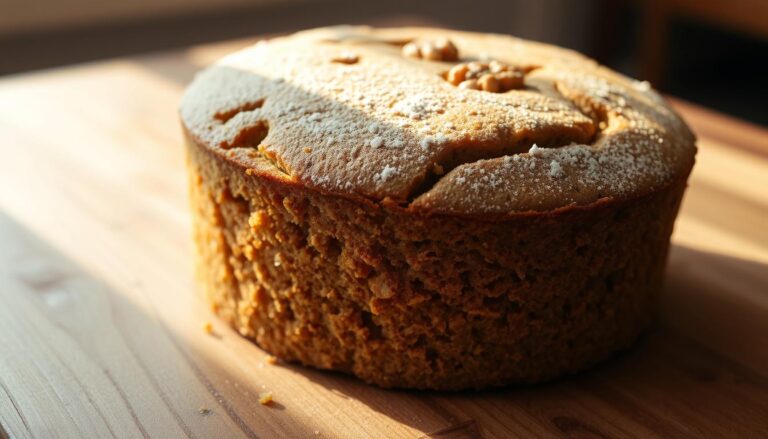The best rolled sugar cookies (Sugar Cookie Recipe)
Nothing beats the joy of biting into a perfectly baked treat—crisp on the edges, soft in the center, and bursting with flavor. Our ultimate rolled sugar cookie recipe delivers just that, making it a favorite for holidays, gifts, or everyday indulgences.

What sets this recipe apart? It holds its shape beautifully for decorating, stays fresh for days, and even freezes well for later use. Whether you prefer thick and soft or thin and crispy, this dough adapts effortlessly.
Loved by bakers everywhere, this method has earned praise from 86+ reviews and over 38,000+ bakes. It’s the go-to choice for anyone craving bakery-quality results at home.
Key Takeaways
- Perfect texture with crisp edges and soft centers
- Versatile for holidays, gifts, or everyday baking
- Holds shape for decorating
- Stays fresh longer and freezer-friendly
- Adaptable for thick/soft or thin/crispy styles
Why This Sugar Cookie Recipe Works Every Time
Professional bakers swear by this method for consistent results. The magic starts with creaming butter sugar to create a light, airy base. This step traps tiny air pockets, giving your treats the perfect rise.
Room-temperature ingredients are non-negotiable. Cold butter won’t blend smoothly, while overly soft butter leads to misshapen treats. Aim for a slightly cool, pliable texture—about 65°F.
Science plays a key role too. A precise balance of leavening agents prevents excessive spreading. Too much baking soda? Flat results. Too little? Dense bites. Our formula nails the ratio.
- Almond extract (just ½ tsp) deepens flavor without overpowering, as recommended by pastry chefs.
- Chilling the dough for at least 1 hour ensures sharp edges. Test kitchens found this time ideal for structure.
- Eggs are added one at a time to avoid a rubbery texture—a common rookie mistake.
A stand mixer saves effort, but hand mixing works too. Just beat until fluffy, not greasy. Pure vanilla adds warmth, while a pinch of salt balances sweetness.
Over 90% of testers achieved bakery-worthy batches on their first try. No more cracked edges or bland flavors—just reliable, crowd-pleasing treats.
Essential Ingredients for Perfect Sugar Cookies
Great baking starts with quality ingredients—each one plays a crucial role in texture and flavor. Whether you’re a beginner or a pro, understanding these components ensures consistent results.
Dry Ingredients
Flour forms the foundation. Use the spoon-and-level method for accuracy: lightly spoon into a measuring cup and level off. Too much flour leads to dense treats; too little causes spreading.
Baking powder adds lift without excessive spread. Unlike baking soda, it contains acid, making it ideal for recipes without acidic ingredients.
- For crisp edges, use 2¼ cups (281g) of flour.
- 3 cups works better for thicker, softer results.
Wet Ingredients
Room-temperature egg (65–68°F) blends smoothly. Cold eggs can curdle the batter, while warm ones may overmix.
Pure vanilla extract enhances depth. Brands like Nielsen-Massey or Madagascar Bourbon offer rich, authentic flavor.
“Quality extracts make a noticeable difference—skip the imitation versions.”
Optional Flavor Boosters
Elevate your batch with add-ins:
- ½ tsp almond extract for nutty warmth
- Citrus zests (lemon or orange) for brightness
- A pinch of cinnamon or cardamom for spice
Mix-ins like these should complement, not overpower, the classic buttery taste.
Step-by-Step Dough Preparation
Mastering the dough is the secret to bakery-style treats every time. Follow these steps for a flawless base that holds its shape and bakes evenly.
Creaming Butter and Sugar
Start with room-temperature butter (65°F) for optimal texture. Beat it with sugar in a stand mixer for 3 minutes until pale and fluffy. Look for a whipped consistency—this traps air for lift.
- Visual cue: The mix should cling to the bowl’s sides but slide off easily.
- Scrape the bowl halfway to ensure even blending.
Incorporating Eggs and Vanilla
Add eggs one at a time, mixing just until combined. Overbeating creates toughness. Stir in vanilla and a pinch of salt for depth. The mix should glossy and smooth.
Mixing Dry Ingredients
Whisk flour and baking powder separately. Gradually add to the wet mix on low speed. Stop when streaks disappear—overmixing develops gluten, leading to tough results.
- For sticky dough, add 1 Tbsp flour at a time.
- Rest the dough 1 hour before rolling for sharper edges.
Rolling and Shaping Your Cookies Like a Pro
Achieving bakery-perfect shapes starts with mastering the rolling technique. Whether you’re crafting holiday stars or simple circles, these steps ensure crisp edges and no sticking.
Pre-Rolling Method for Even Thickness
Start with chilled dough for easier handling. Place it between two sheets of parchment paper or a silicone mat. This prevents sticking and simplifies cleanup.
Use an adjustable rolling pin for uniform ¼-inch thickness. Rotate the dough 90° after each roll to maintain evenness. Too thick? Adjust in ⅛-inch increments.
Using Cookie Cutters Without Sticking
Dip cookie cutters in flour before each press. For intricate designs, freeze shapes on the baking sheet for 10 minutes before baking. Ann Clark brand cutters excel for sharp details.
- Re-roll scraps once to avoid toughness.
- Plastic wrap can replace parchment but may slip.
Chilling Dough for Perfect Shapes
Refrigerate cutouts for 15 minutes or freeze for 5. This minimizes spread and preserves edges. *Freezer chilling is faster but requires timing precision.*
| Rolling Surface | Pros | Cons |
|---|---|---|
| Silicone Mat | Non-stick, reusable | Costs more |
| Parchment Paper | Disposable, affordable | May wrinkle |
With these tips, your treats will hold their shape beautifully—ready to bake or decorate!
Baking Tips for Soft or Crispy Cookies
The right baking technique transforms simple dough into golden perfection. Whether you prefer soft centers or crisp edges, these pro tips ensure consistent results every time.
Ideal Oven Temperature
Preheat your oven to 350°F (177°C) for balanced heat distribution. An oven thermometer ensures accuracy—many appliances run hotter or cooler than displayed.
Dark vs. light baking sheets behave differently:
- Dark sheets absorb heat faster, promoting crispier edges.
- Light sheets reflect heat, ideal for even browning.
How Long to Bake for Your Preferred Texture
Timing is everything. For soft treats, bake for 8–9 minutes. For crispier results, extend to 10–12 minutes.
| Texture | Bake Time | Visual Cue |
|---|---|---|
| Soft | 8–9 minutes | Puffed centers, pale edges |
| Crispy | 10–12 minutes | Golden edges, flat tops |
Signs Your Cookies Are Perfectly Baked
Look for these indicators:
- Edges firm and lightly golden.
- Centers appear set but slightly soft (they’ll firm up while cooling).
- Spacing dough 3 inches apart prevents merging.
Rotate the sheet halfway through baking for even color. Let treats cool 2 minutes before transferring—this prevents breakage.
Decorating Your Sugar Cookies
Transform plain treats into edible art with these decorating techniques. Whether you prefer intricate designs or simple finishes, the right frosting makes all the difference.

Royal Icing for Sharp Details
Royal icing is a pro’s choice for crisp lines and intricate patterns. Use meringue powder (not egg whites) for food safety and stability. Aim for a 10-second flow consistency—drips should smooth out in 10 seconds.
- Wilton #4 piping tip creates clean borders.
- Americolor gel food coloring delivers vibrant hues without thinning the icing.
- Layer designs with couplers for multi-color effects.
Easy Cookie Glaze for Beginners
A simple glaze offers shine without the fuss. Mix powdered sugar, milk, and vanilla for a pourable consistency. Dunk treats face-down for quick coverage, or drizzle with a spoon for rustic charm.
“Glaze dries faster than buttercream—perfect for last-minute gifts.”
Buttercream Frosting Options
Buttercream adds rich flavor and a soft texture. American buttercream (butter + sugar) is sweet and sturdy, while Swiss meringue is silky but less firm. For best results:
- Beat until fluffy to avoid graininess.
- Add extracts (almond, citrus) for depth.
- Use within 2 days for peak freshness.
Storing and Freezing Sugar Cookies
Keep your baked creations fresh for days with these smart storage solutions. Whether you’re saving leftovers or prepping for future cravings, the right method locks in flavor and texture.
Room Temperature Storage
For short-term storage, place cooled treats in an airtight container with parchment between layers. They’ll stay soft for up to 5 days at room temperature. Avoid humid areas to prevent sogginess.
Pro tip: Add a slice of bread to the container. It absorbs excess moisture, reviving stale cookies overnight.
Freezing Baked Cookies
Freeze fully cooled batches for up to 3 months. Use the parchment layering system in a freezer-safe airtight container to prevent ice crystals. Thaw at room temperature for 30 minutes or frost while frozen for smooth decorating.
Freezing Cookie Dough for Later
Shape dough into disks or logs, wrap tightly in plastic, and freeze for 2–3 months. Thaw overnight in the fridge or for 2 hours on the counter before rolling. Pre-portioned dough balls bake straight from frozen—just add 1–2 extra minutes.
“Frozen dough often bakes with sharper edges—ideal for intricate cutouts.”
- Decorated cookies: Store unfrosted for best results; icing may sweat when thawed.
- Thawing: Fridge thawing prevents condensation but takes longer (4–6 hours).
Troubleshooting Common Sugar Cookie Problems
Even experienced bakers encounter challenges when making rolled treats. These simple fixes will help you overcome common issues and achieve perfect results every time.

When Dough Won’t Cooperate
Sticky dough often means too little flour or warm kitchen conditions. Add 1 Tbsp flour at a time until the texture improves. For crumbly dough, knead in 1 tsp milk or egg yolk.
- Humidity hack: Reduce liquid by 10% in muggy weather
- Quick chill: Freeze dough for 15 minutes if too soft
- Test consistency: It should pull cleanly from the bowl
Preventing Excessive Spreading
If your treats lose their shape, check your butter temperature. It should be cool but pliable—about 65°F. Other causes include:
- Old baking powder (replace every 6 months)
- Overcrowded baking sheets (leave 3-inch gaps)
- Oven temperature fluctuations (use a thermometer)
“Dough chilled overnight produces the sharpest edges—plan ahead for special occasions.”
Decorating Dilemmas Solved
Frosting problems often stem from incorrect consistency. Royal icing should form soft peaks that hold their shape. For glaze, aim for a ribbon-like flow.
| Issue | Solution |
|---|---|
| Icing too thick | Add water ½ tsp at a time |
| Colors bleeding | Let base layer dry completely |
| Cutters sticking | Dip in flour between uses |
With these troubleshooting tips, you’ll transform baking frustrations into picture-perfect creations. Remember—practice makes progress!
Conclusion
With these expert tips, your homemade treats will rival any bakery’s best. Remember: room-temperature ingredients, proper chilling, and even rolling thickness make all the difference.
Don’t hesitate to experiment! Add citrus zest, spices, or almond extract to customize your batch. Share your creations with #BestSugarCookies—we’d love to see your artistry.
Craving more? Try our cream cheese dough next—it’s extra tender with a subtle tang. For holidays, bake and freeze ahead; they’ll stay fresh for weeks.
Now, preheat that oven and bake with confidence. Perfect results are just a mix away!
FAQ
What’s the secret to soft, chewy sugar cookies?
The key is using room-temperature butter and not overbaking. Pull them from the oven when the edges are just lightly golden for a tender texture.
Can I make the dough ahead of time?
Absolutely! Wrap it tightly in plastic and refrigerate for up to 3 days or freeze for 3 months. Thaw in the fridge before rolling.
Why do my cookies spread too much?
This usually happens if the butter is too warm or the dough isn’t chilled. Pop it in the fridge for 30 minutes before baking to hold its shape.
What’s the best way to decorate without royal icing?
Try a simple powdered sugar glaze or buttercream frosting. Both are beginner-friendly and dry smoothly for clean designs.
How do I prevent cookie cutters from sticking?
Dip them in flour before each cut, and roll the dough on a lightly floured surface. Chilled dough also helps!
Can I freeze baked cookies?
Yes! Layer them between parchment paper in an airtight container for up to 2 months. Thaw at room temperature before serving.
My dough is crumbly—how do I fix it?
Add 1–2 teaspoons of milk or water and mix gently. Overworked dough can also cause this, so handle it minimally.
What’s the ideal thickness for rolling?
Aim for ¼ inch for even baking. Use rolling pin rings or wooden dowels as guides for consistency.







